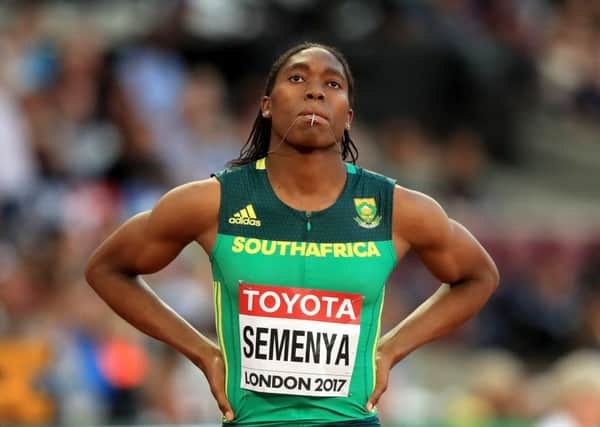Why the Caster Semenya case opens up bigger questions for world of athletics


The 28-year-old South African is the world’s best female 800m runner – three times world champion, twice Olympic champion. Her first world title came in 2009 but only after she was subjected to the appalling ordeal of a gender verification test that was leaked and led to international speculation about her right to compete as a female.
Why?
While it has never been confirmed, as it is nobody else’s business, Semenya is widely believed to have been born with one of several rare genetic conditions that are collectively known as differences of sex development, although those with such a condition often prefer to be known as intersex. What is important for this story is that this means Semenya was born with naturally-occurring high levels of testosterone, the primary male sex hormone which plays a key role in giving most men leaner, stronger bodies than most women.
Does this mean she has an advantage over most women?
Advertisement
Hide AdAdvertisement
Hide AdAccording to athletics’ governing body the IAAF, yes. And most experts agree. Where there is considerable disagreement, however, is how much of an advantage she and other intersex athletes have and whether this advantage should be treated differently to any of the other physiological gifts elite athletes have. Following her breakthrough in 2009, the IAAF started looking for a more scientific approach to this dilemma than sex tests and, in 2011, it came up with its first version of a testosterone threshold for women with its ‘hyperandrogenism regulations’.
What happened to them?
Semenya and other intersex athletes were required to take hormone suppressants, usually oral contraceptives, to reduce their testosterone to 10 nanomoles/Litre of blood serum, a number towards the bottom of the male range but still five times higher than the top of the typical female range. Semenya’s times for the 800 metres dipped by three to four seconds until an Indian sprinter called Dutee Chand challenged the limit at the Court of Arbitration for Sport and forced the IAAF to suspend the rules for two years.
What happened next?
In 2018 the IAAF said it was ready to bring back a testosterone limit but this time halved to 5 nmol/L and only applicable in events where it said there was statistical proof of a significant performance advantage for intersex athletes. Semenya decided to appeal.
And she lost, right?
Yes. And no. The appeal hearing took place in Lausanne over five days in February and the result was a 2-1 win for the IAAF in terms of the judges on the panel. They were asked by Semenya and Athletics South Africa to declare the IAAF rules “invalid” because they are “discriminatory, unnecessary, unreliable and disproportionate”. One of the judges agreed with Semenya.
Advertisement
Hide AdAdvertisement
Hide AdThe other two said they are “discriminatory” but needed to provide a level playing field for all female athletes.
So the court agreed that the IAAF was discriminating against Semenya?
Yes. In fact, it went further in the conditions it was attaching to its approval of the IAAF approach. Itsaid it was worried about athletes unintentionally breaking the rule by failing to keep their testosterone below 5 nmol/L, and concerned about the side effects of hormone suppressants.
How has the IAAF reacted to that?
Understandably, it is pleased that CAS has found its rules are “necessary, reasonable and proportionate” and said they will now come into effect on May 8.
And Semenya?
Advertisement
Hide AdAdvertisement
Hide Ad“Pleased” the judges agree with her that the rules are discriminatory but said she is “disappointed” that only one of them thought they were disproportionate, too.
So what happens next?
Almost certainly, an appeal, but to whom? What is certain, though, is that this is not over.